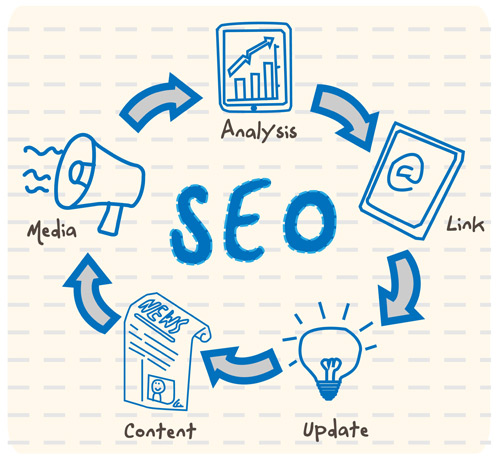
“Why are you passionate about what you do?” This hardball inquiry was tossed into a panel discussion I recently participated in at Northwestern University with students who are a part of the Medill Integrated Marketing Communications (IMC) program.
A question that I, like many professionals, ask myself often, I realized that it’s largely because of the endless learning opportunities available within the marketing field.
Case in point: That same morning I attended a BMA breakfast seminar on content marketing and SEO best practices led by Andy Crestodina, web strategist for Orbit Media. The seminars are great because you walk away with takeaways that are not only useful, but actionable. As someone who spends a majority of the workday creating content, I know it’s equally as important to understand how to optimize, distribute and measure it effectively.
Here are a few key takeaways and reminders of SEO best practices for content marketers, courtesy of Andy.
Help vs. Hype
Content is what search engines rank; every piece of content on your website is an opportunity to get indexed and subsequently “found” online. With this in mind, make sure content is useful and valuable to your audience. Most marketers know this but still create and promote sales messages. Ads do not get shared, people. Andy goes as far to say that advertisements are actually a distraction in today’s content marketing environment.
Storytelling: Buzzword or Best Practice?
Andy believes brands place too much emphasis on initial storytelling. Website visitors (consumers) don’t care about your brand, they only care about themselves until you can prove that you are able to help them in some way. This mindset begs the question: what level of storytelling is necessary when selling is the bottom line?
Website Dos and Don’ts
While you should definitely have a home for social media icons on your website, do not place them in the header of your homepage. Why would you want to encourage someone to leave your website and head to social media where there are an abundance of distractions (read: cat memes)? Rarely do they return to your site. Tip: Place icons in the footer or consider only placing them on the Thank You page after users complete a specific call-to-action.
Speaking of calls-to-action, limit yourself to one per page. Don’t overwhelm the user with multiple directives or you could lose them altogether. Similarly, each page should have it’s own conversion goal and prohibit dead ends. Tip: Check your visitor flow in Google Analytics to determine where these dead end points are.
If possible, create dedicated landing pages for key employees, complete with photos and bios. Not only is this the one page about you and your employees that you have complete control over, but it’s necessary so social media sites do not outrank your own website. Better yet, include forms and social icons on the About Page and subsequent employee landing pages.
Lastly, don’t be afraid of white space. Too many companies feel the need to fill every single inch on each page. Clean, simple, and easy to navigate is key.
Tricks of the Trade
Not having time to blog is the #1 issue facing content marketers. Everyone is a writer, they just don’t do anything with the content. Consider how much time you, your sales team, or customer service reps spend responding to email, likely addressing the same questions time and time again. This is all valuable content, it just needs a home. Tip: BCC yourself on responses to questions and you’ll probably find that a handful of these emails have generated your next blog post!
If you’re still falling short on topics to blog about, search tools like Ubersuggest, Soovle, Google Suggest, and Google Keyword Planner are all great places to start hunting. These tools will serve up suggestions based on topics consumers are already searching for. Or you can head to your Google Analytics Queries to see phrases your website already ranks for and make sure you’re addressing these topics in your content.
This is only the tip of the iceberg when it comes to SEO and content marketing. As we know it’s a continuous learning process, but one that makes the industry all the more exciting.


